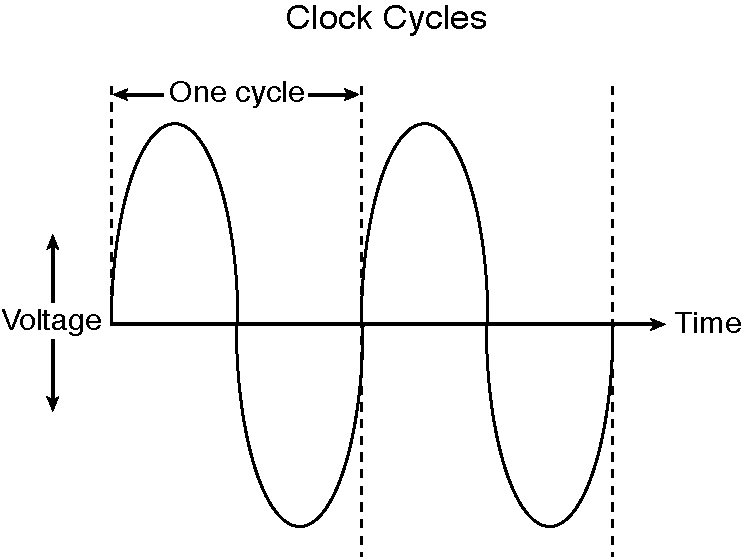Upgrading And Repairing PCs 21st Edition: Processor Specifications
Processor Benchmarks And Comparing Performance
Processor Benchmarks
People love to know how fast (or slow) their computers are. We have always been interested in speed; it is human nature. To help us with this quest, we can use various benchmark test programs to measure aspects of processor and system performance. Although no single numerical measurement can completely describe the performance of a complex device such as a processor or a complete PC, benchmarks can be useful tools for comparing different components and systems.
However, the only truly accurate way to measure your system’s performance is to test the system using the actual software applications you use. Although you think you might be testing one component of a system, often other parts of the system can have an effect. It is inaccurate to compare systems with different processors, for example, if they also have different amounts or types of memory, different hard disks, different video cards, and so on. All these things and more skew the test results.
Benchmarks can typically be divided into two types: component or system tests. Component benchmarks measure the performance of specific parts of a computer system, such as a processor, hard disk, video card, or optical drive, whereas system benchmarks typically measure the performance of the entire computer system running a given application or test suite. These are also often called synthetic benchmarks because they don’t measure actual work.
Benchmarks are, at most, only one kind of information you can use during the upgrading or purchasing process. You are best served by testing the system using your own set of software OSs and applications and in the configuration you will be running.
I normally recommend using application-based benchmarks such as the BAPCo SYSmark to measure the relative performance difference between different processors or systems.
Comparing Processor Performance
A common misunderstanding about processors is their different speed ratings. This section covers processor speed in general and then provides more specific information about Intel, AMD, and VIA/Cyrix processors.
A computer system’s clock speed is measured as a frequency, usually expressed as a number of cycles per second. A crystal oscillator controls clock speeds using a sliver of quartz sometimes housed in what looks like a small tin container. Newer systems include the oscillator circuitry in the motherboard chipset, so it might not be a visible separate component on newer boards. As voltage is applied to the quartz, it begins to vibrate (oscillate) at a harmonic rate dictated by the shape and size of the crystal (sliver). The oscillations emanate from the crystal in the form of a current that alternates at the harmonic rate of the crystal. This alternating current is the clock signal that forms the time base on which the computer operates. A typical computer system runs millions or billions of these cycles per second, so speed is measured in megahertz or gigahertz. (One hertz is equal to one cycle per second.) An alternating current signal is like a sine wave, with the time between the peaks of each wave defining the frequency (see the figure below).
Get Tom's Hardware's best news and in-depth reviews, straight to your inbox.
Note: The hertz was named for the German physicist Heinrich Rudolf Hertz. In 1885, Hertz confirmed the electromagnetic theory, which states that light is a form of electromagnetic radiation and is propagated as waves.
A single cycle is the smallest element of time for the processor. Every action requires at least one cycle and usually multiple cycles. To transfer data to and from memory, for example, a processor such as the Pentium 4 needs a minimum of three cycles to set up the first memory transfer and then only a single cycle per transfer for the next three to six consecutive transfers. The extra cycles on the first transfer typically are called wait states. A wait state is a clock tick in which nothing happens. This ensures that the processor isn’t getting ahead of the rest of the computer.
The time required to execute instructions also varies:
- 8086 and 8088—The original 8086 and 8088 processors take an average of 12 cycles to execute a single instruction.
- 286 and 386—The 286 and 386 processors improve this rate to about 4.5 cycles per instruction.
- 486—The 486 and most other fourth-generation Intel-compatible processors, such as the AMD 5x86, drop the rate further, to about 2 cycles per instruction.
- Pentium/K6—The Pentium architecture and other fifth-generation Intel-compatible processors, such as those from AMD and VIA/Cyrix, include twin instruction pipelines and other improvements that provide for operation at one or two instructions per cycle.
- P6/P7 and newer—Sixth-, seventh-, and newer-generation processors can execute as many as three or more instructions per cycle, with multiples of that possible on multicore processors.
Different instruction execution times (in cycles) make comparing systems based purely on clock speed or number of cycles per second difficult. How can two processors that run at the same clock rate perform differently, with one running “faster” than the other? The answer is simple: efficiency.
Current page: Processor Benchmarks And Comparing Performance
Prev Page IA-32e 64-Bit Extension Mode (x64, AMD64, x86-64, EM64T) Next Page Processor EfficiencyTom's Hardware is the leading destination for hardcore computer enthusiasts. We cover everything from processors to 3D printers, single-board computers, SSDs and high-end gaming rigs, empowering readers to make the most of the tech they love, keep up on the latest developments and buy the right gear. Our staff has more than 100 years of combined experience covering news, solving tech problems and reviewing components and systems.
-
burnley14 One of the most interesting and informative articles I've ever read on the site. Great job!Reply

